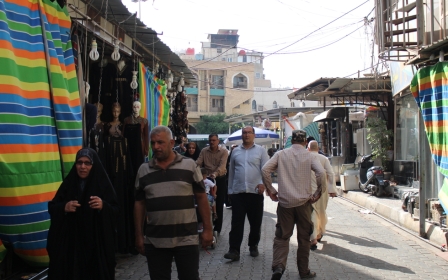Satellite images show ancient Iraq temple destroyed

Satellite images confirm the destruction of the ancient Nabu temple in Iraq, the UN said late on Wednesday, after the Islamic State (IS) group claimed to have blown it up.
The UN training and research agency UNITAR said it had analysed satellite images collected on 3 June over the ancient Assyrian city of Nimrud in northern Iraq.
"Compared to imagery collected 12 January 2016, we observe extensive damage to the main entrance of what is known as Nabu Temple," the agency said, providing the two sets of satellite images.
In its latest attack on a historic site under its control, IS released a video this week claiming to have blown up the 2,800-year-old temple, devoted to the Babylonian god of wisdom.
The video showed shots of an information sign at the temple followed by a massive explosion. One of the fighters in the film also threatened to blow up the Egyptian pyramids and the Sphinx.
Nimrud, one of the jewels of the Assyrian era, was founded in the 13th century BC and lies on the Tigris River around 30km southeast of Mosul, Iraq's second city and the IS group's main hub in the country.
UNITAR said Nimrud was "included in Iraq's Tentative List of sites which are likely to be nominated for inscription on UNESCO's World Heritage List".
It remained unclear when the ancient temple had been destroyed.
The IS footage also showed bulldozers destroying the Mashki and Nergal gates at Nineveh, near Mosul.
But Christopher Jones, an expert on Neo-Assyrian Empire who runs an archeology blog, pointed out that the group had already previously released a photo essay showing the destruction of the Mashki gate, which he said had been bulldozed on 10 April.
As for the Nergal gate, he said IS militants had already chisled the face off an imposing granite Assyrian winged bull representing a lamassu, or an Assyrian protective deity, flanking the gate back in February.
"This suggests that ISIS has gone back to re-destroy artefacts that it already destroyed once, in order to get footage for new videos," he wrote on his blog on Wednesday, using another acronym for IS.
In IS's hardline interpretation of Islam, statues, idols and shrines amount to recognising objects of worship other than God and must be destroyed. The group's destruction of such antiquities has also been carried out in order to provoke the West, analysts say.
IS militants have systematically destroyed heritage sites in areas they control, including much of Syria's ancient city of Palmyra before they were chased out by Syrian government troops in March.
New MEE newsletter: Jerusalem Dispatch
Sign up to get the latest insights and analysis on Israel-Palestine, alongside Turkey Unpacked and other MEE newsletters
Middle East Eye delivers independent and unrivalled coverage and analysis of the Middle East, North Africa and beyond. To learn more about republishing this content and the associated fees, please fill out this form. More about MEE can be found here.




